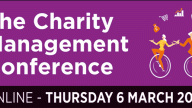Personal development, Management
Neurodiversity: How to remove barriers and discrimination
Make sure your organisation is more inclusive for neurodivergent staff.
Your workforce is neurodiverse. It contains individuals with minds of all kinds.
Some may be neurotypical. Others may be autistic, dyspraxic, ADHD or neurodivergent in some other way.
You (and your workers) may not know it, but the chances are that there is neurological diversity in your ranks.
And that is potentially very beneficial. Having workers who look at things in different ways could mean that your organisation can be more creative and effective.
I say ‘potentially’, because most organisations are not fulfilling that potential. Some might not know (or care) much about neurodiversity. Others might see it as an issue that they will deal with if and when an employee gets a diagnosis and tells their manager.
But please don’t wait for that to happen. Diagnoses are difficult and time-consuming to get, and stigma still makes some people too embarrassed to tell. In any case, you can make your organisation more neuro-inclusive without an individual having to put their head over the parapet (as the neurotypicals might say).
Make sure that your workplace documentation is in a dyslexia-friendly layout (check with the British Dyslexia Association’s style guide). Keep a stock of noise-cancelling headphones that everyone can access. Replace your fluorescent lighting with dimmable, full-spectrum lighting. Cut down on those long, boring meetings.
And reconsider the way you manage your organisation. If a staff member is having problems, then rather than asking yourself what is wrong with the staff member, ask yourself (and the staff member) what is wrong with the conditions in which they are working. Think about whether your workplace hierarchies are really necessary, or whether there might be an alternative, better way to organise. Allow workers to work in the way that suits them, which may not be the same way that suits others. Provide neurodiversity training for everyone.
Those are just a few ways of making your organisation more neuro-inclusive and therefore more effective. Of course, there is much more to it than that.
To work out what more you can do, apply the social model of disability. Stop thinking that the individual’s dyspraxia, Tourette’s or dyscalculia is the problem, and start thinking two alternative things. One, that their neurodivergence brings strengths as well as ‘problems’. And two, that it may be your workplace, rather than workers’ neurodivergence, which is causing problems to neurodivergent workers.
To do both those things, you have to listen to neurodivergent people and their organisations. Nothing about us without us.
It is not just your workforce that is neurodiverse. So are your clients or service users. Up your game on neurodiversity and you will stop excluding people who need your services but think in an atypical way.
DSC and Red in the Spectrum are working together to help charities become more inclusive of neurodivergent staff (and clients). In doing so, we will help charities become more effective at what they do.
Join us at The Charity Management Conference for a session on neurodiversity in the workplace
We understand that managing a charity can be tough and comes with a lot of pressure. It can be challenging to balance managing upwards and downwards.
That’s why we would like to invite you to The Charity Management Conference on Thursday 6 March. Throughout the day, we will explore new ways to navigate the multi-dimensional role of being a charity manager.




